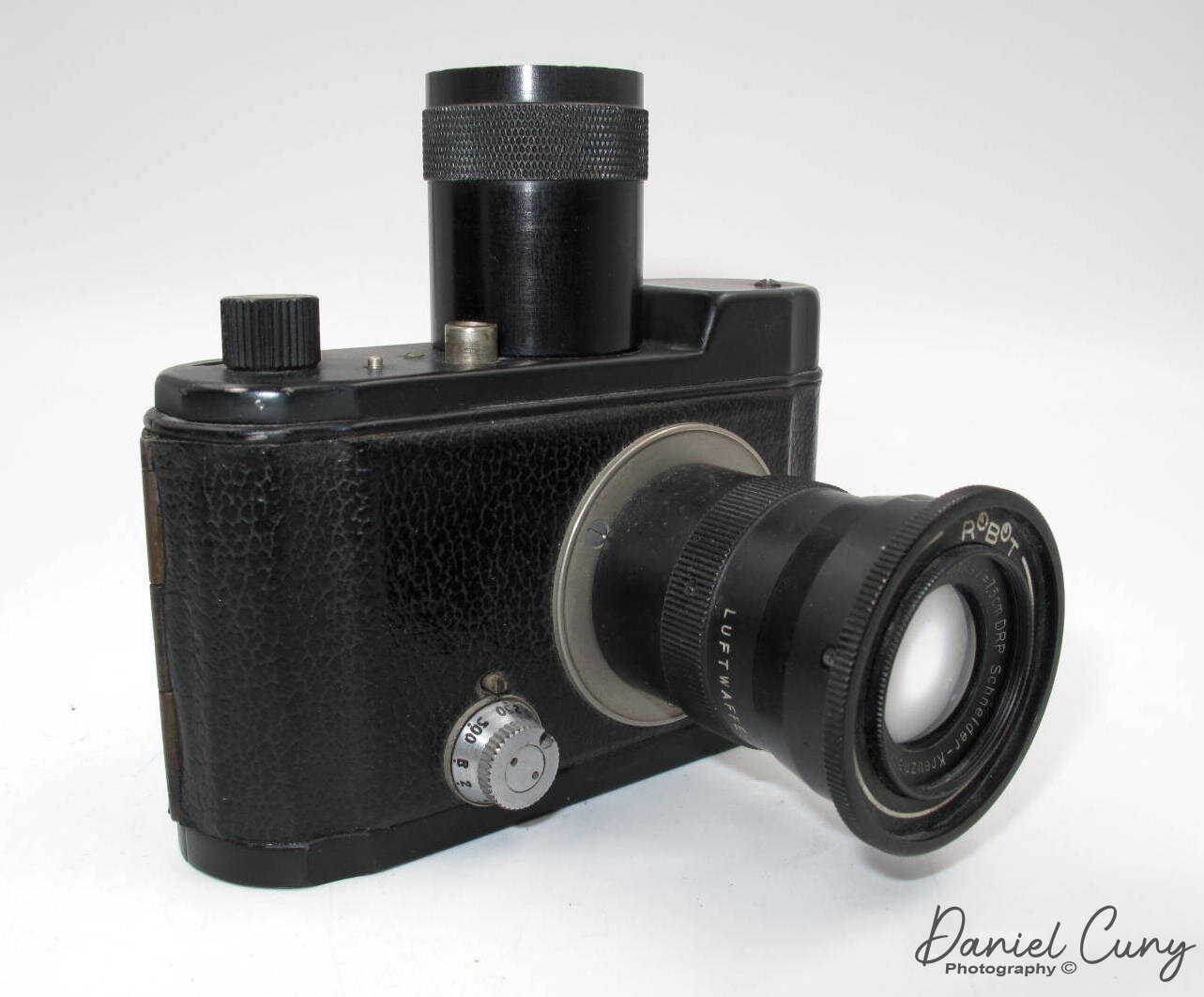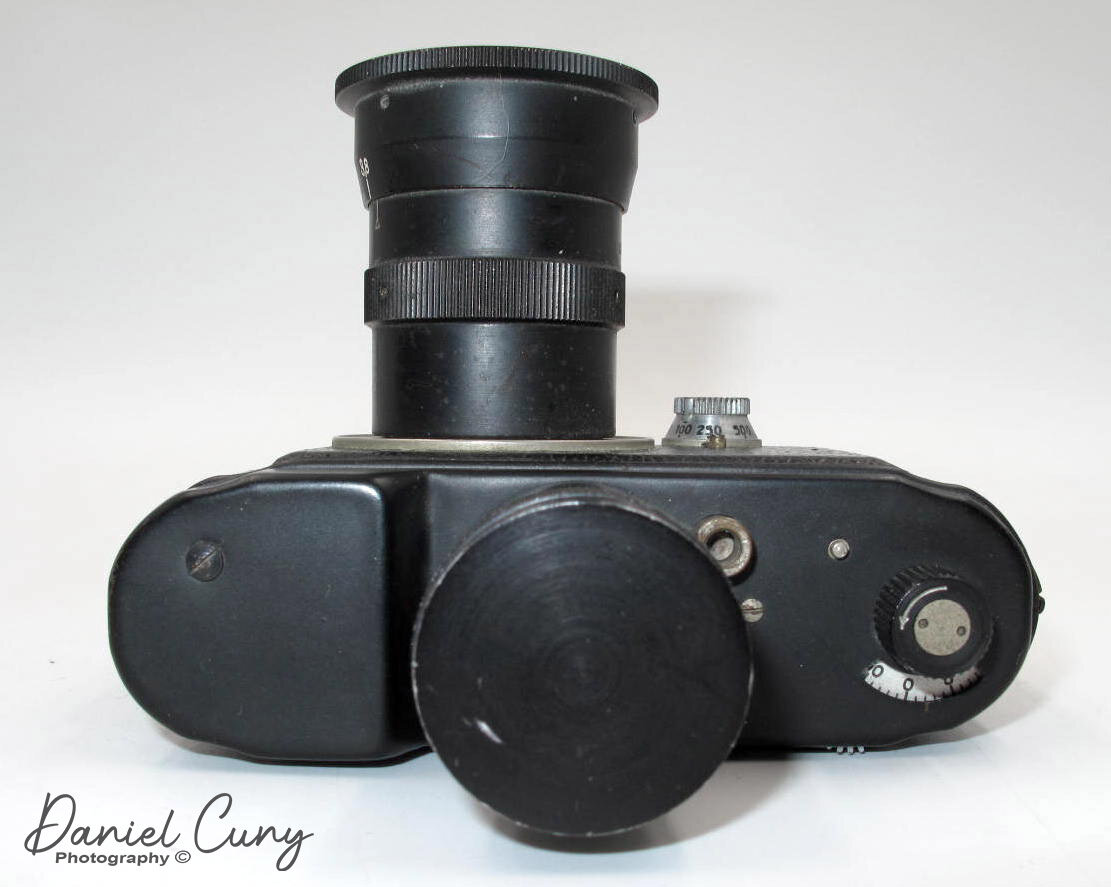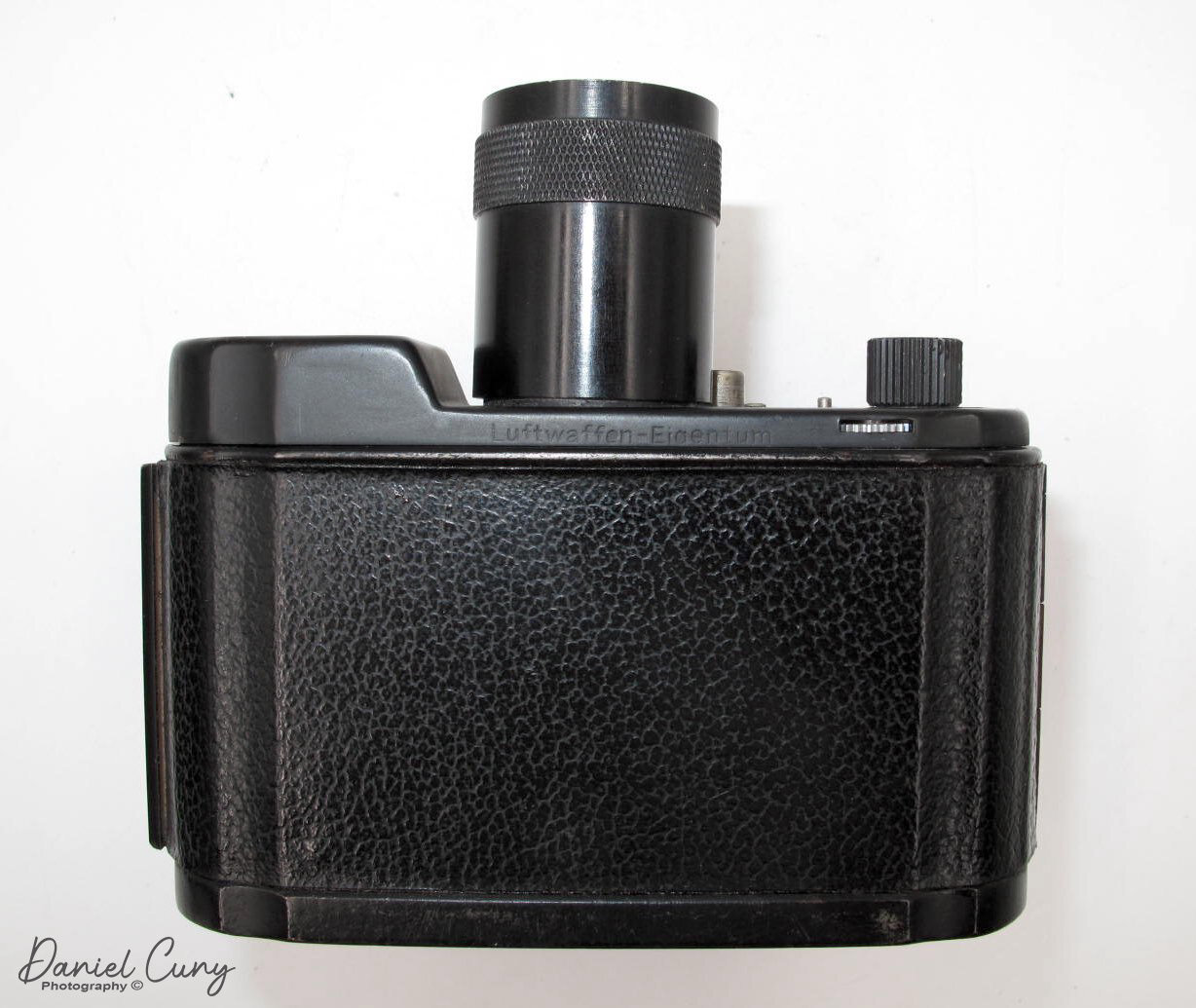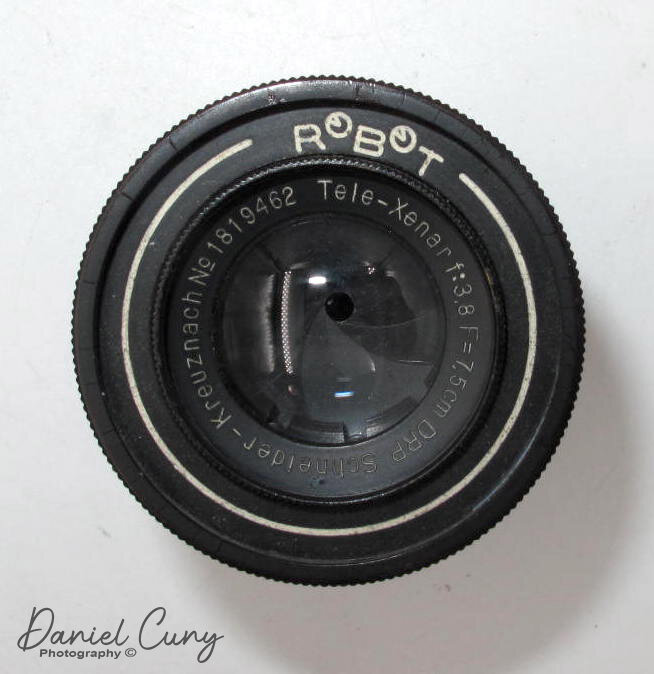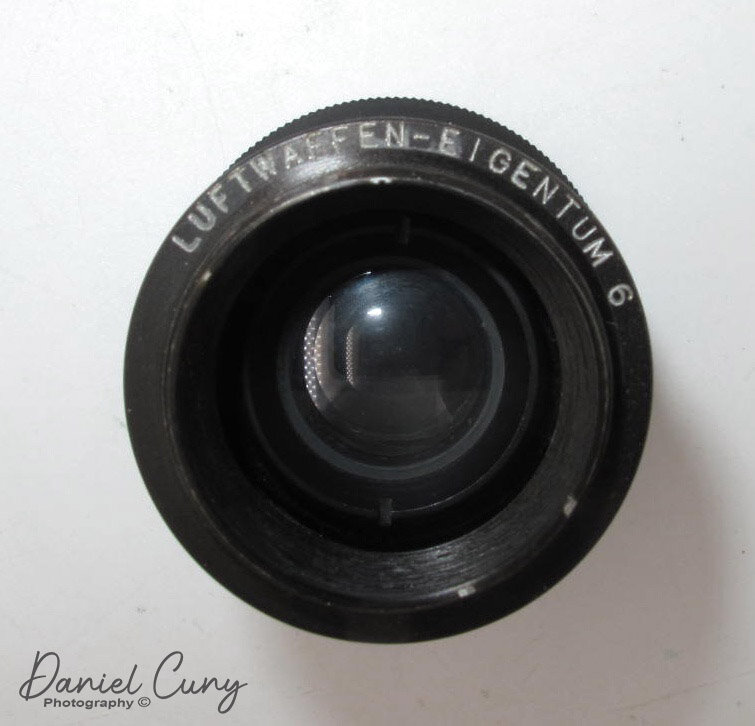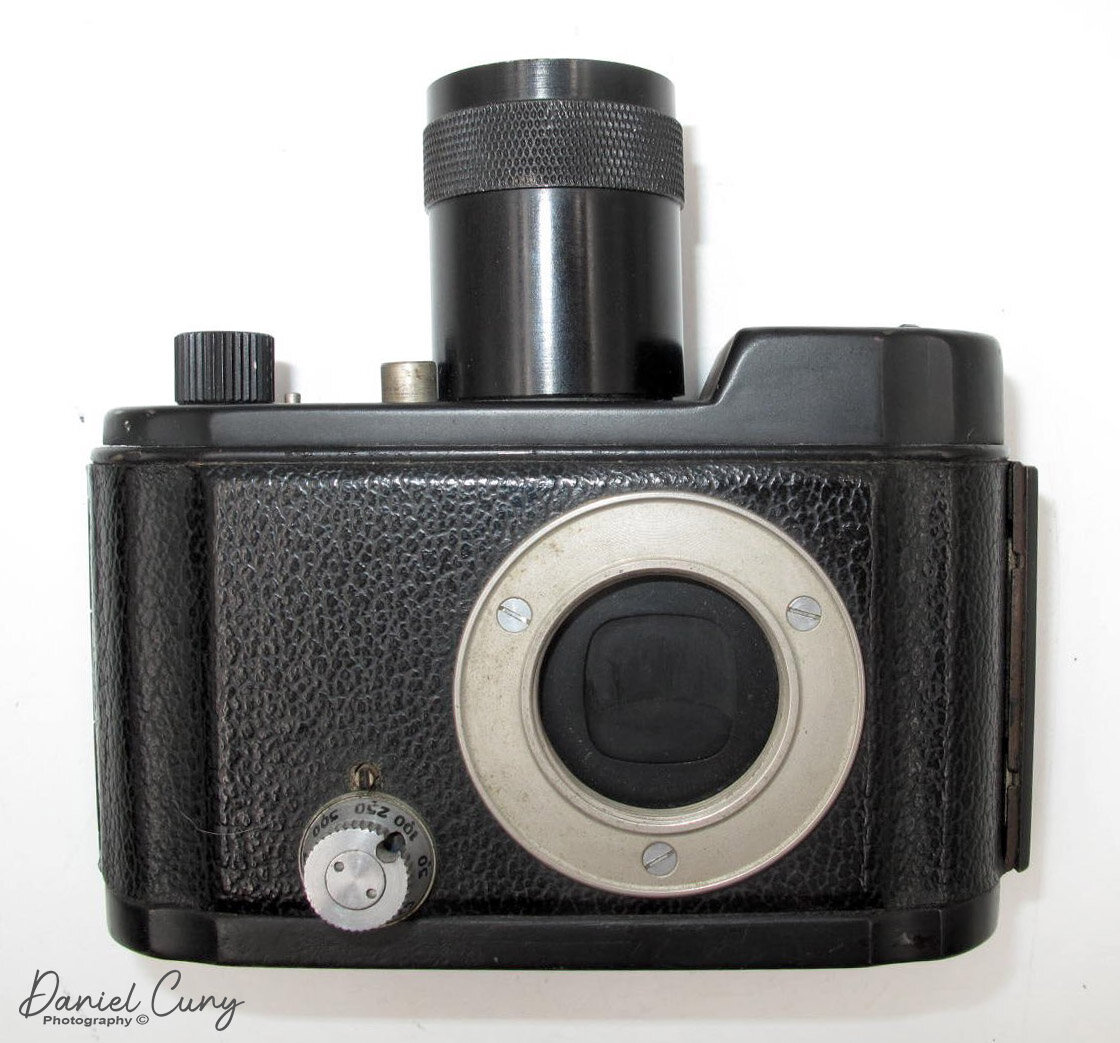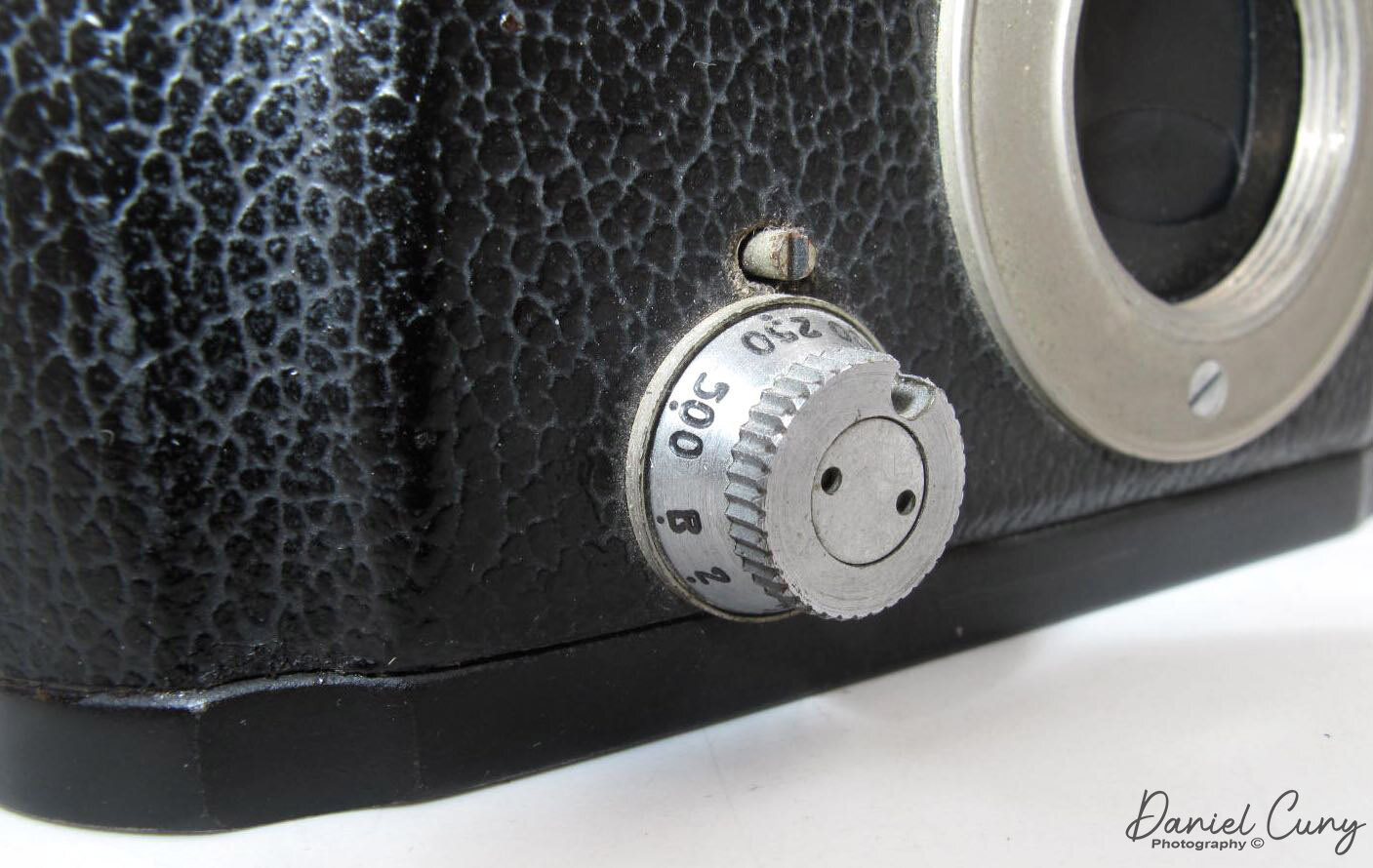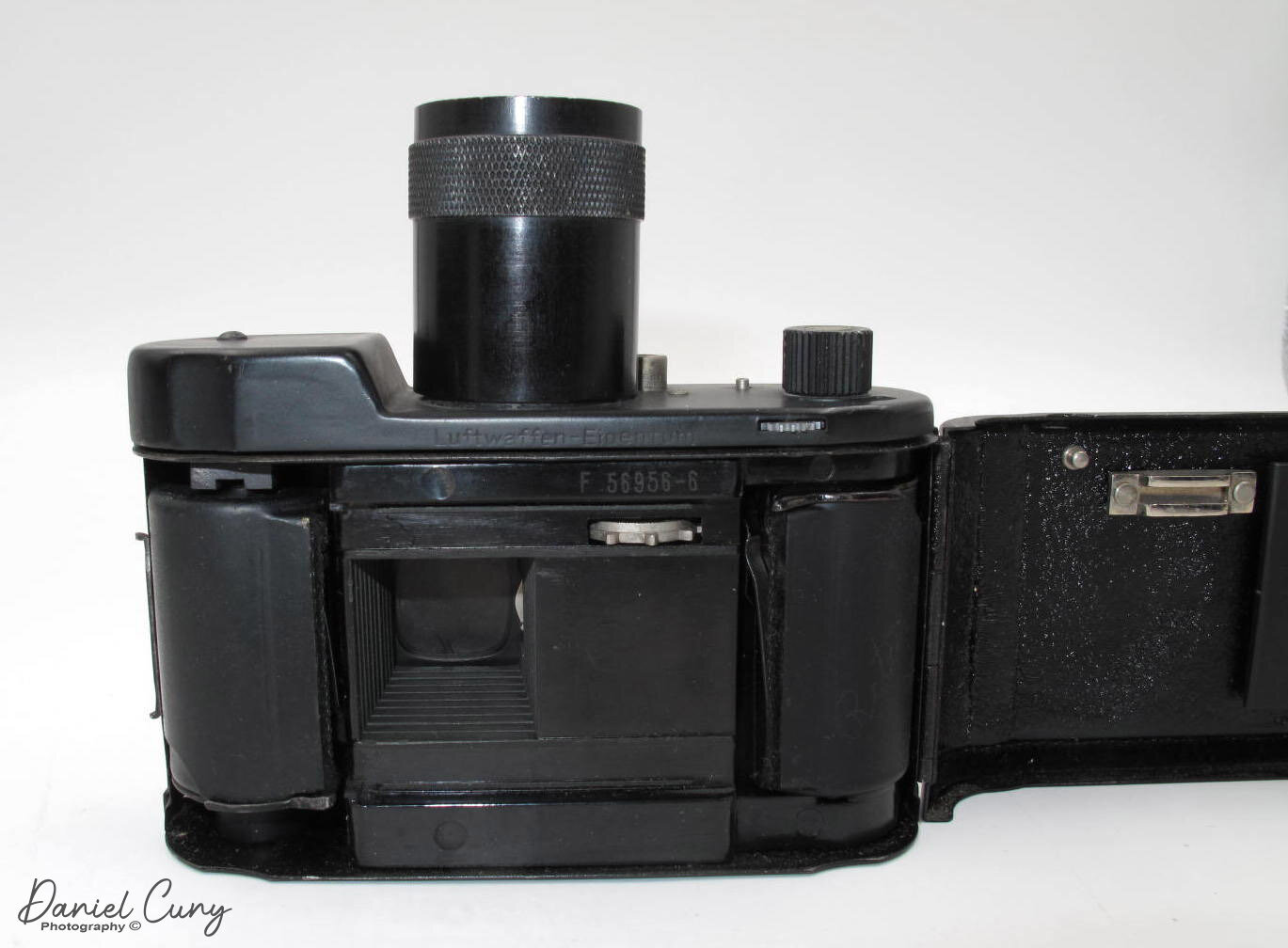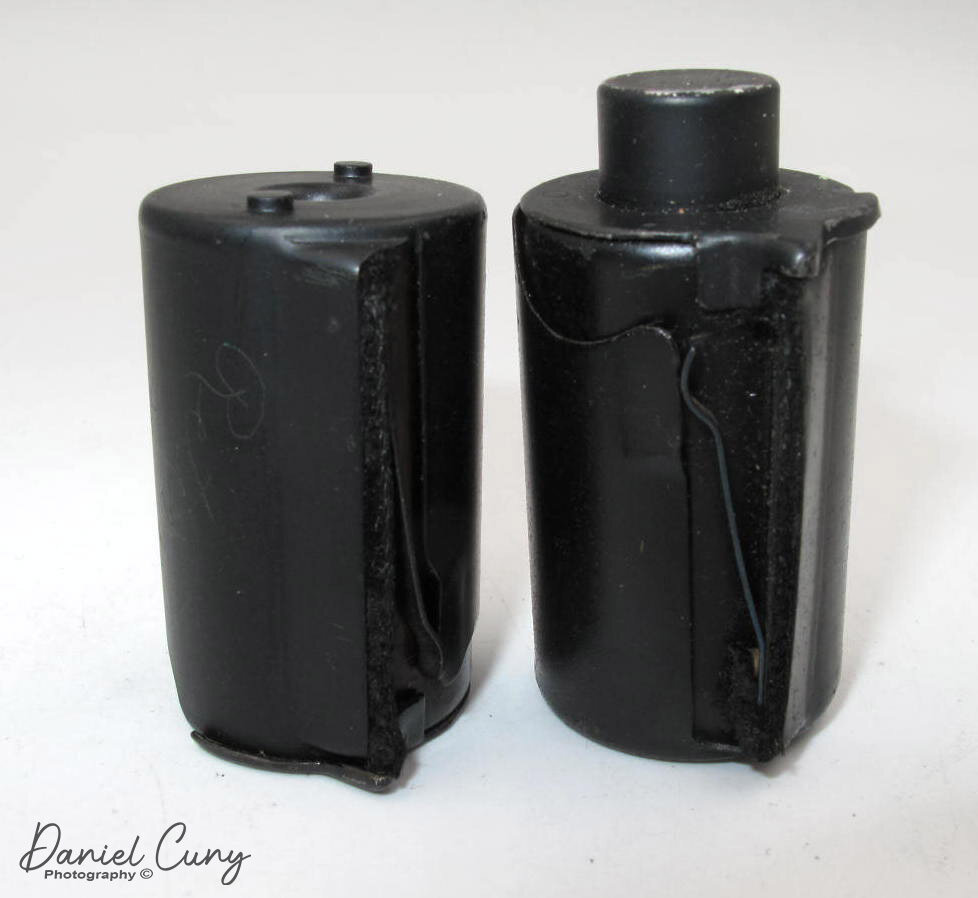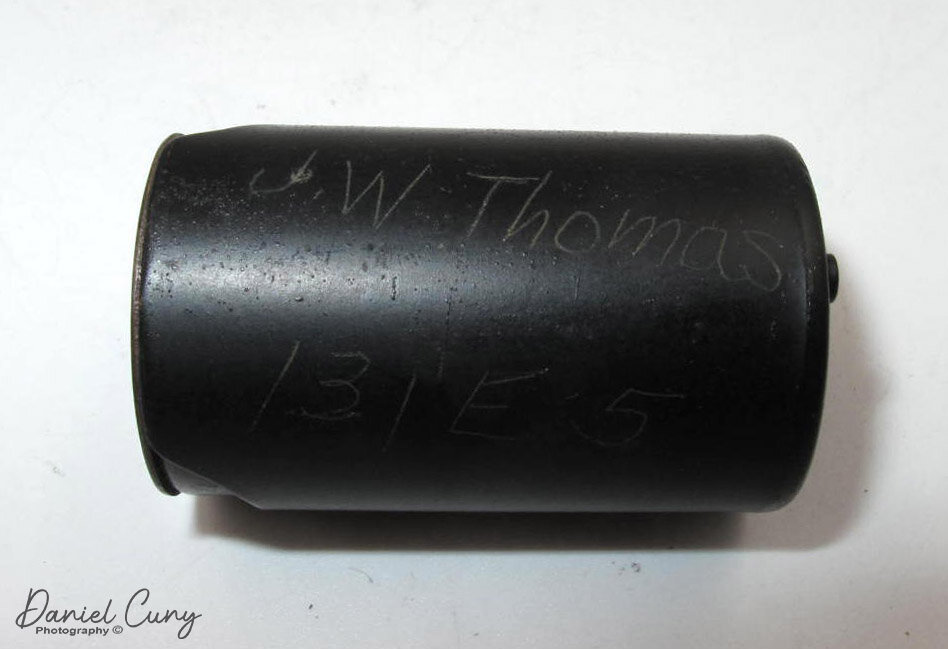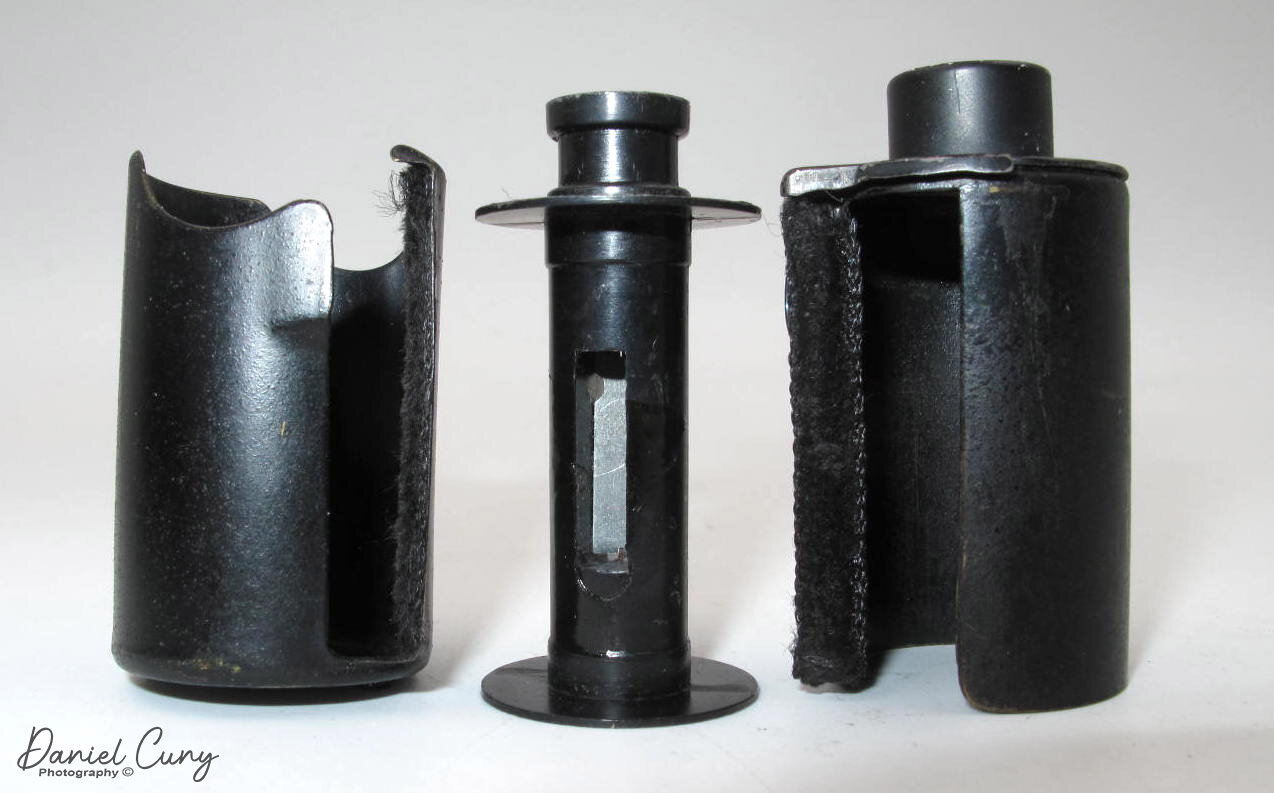Robot Luftwaffen Eigentem w/7.5cm F3.8 Lens
First and foremost, I want to take a moment and say if this post about a German camera explicitly made for the German Air Force during WWII makes you uncomfortable or upset, it is my sincere apologies. That's not my intention. I enjoy everything photographic, and this camera has always been one I've wanted to own, with so many others, but this one I can afford, unlike the grey Leica's or other rarities.
In my opinion, Robot cameras are one of the best built and smoothest cameras to operate. They are a real work of art, feel solid, and are used with the fullest of confidence. I'm guessing that's because the original camera came from the Otto Berning and Co. manufactured clocks. Robot cameras have a clock spring advance on the top of the camera, one of the unique items about these cameras.
Otto Berning and Co. started manufacturing amateur cameras in 1934. A young watchmaker in his 30's, Heinz Kilfitt designed the first compact camera Robot would be so well known for. He sold the design to Hans Berning, who was only 23 and worked for his father's company. The 35mm loaded film cartridge was invented in 1936. Up to that time, 35mm photographers had to load the 35mm film into film K-cartridges themselves. One cassette for the unexposed and one for the exposed film. The only camera companies using 35mm at this time were Leica and Zeiss Contax. There was a film format of 24x24mm that was offered to Kodak and Agfa, but they rejected the 24x24mm frame size, and it was sold to Hans Berning, who put it into the Robot cameras. A real advantage of the 24x24mm frame size was that the photographer could get 50 images on a roll of film instead of standard 36 on the traditional 24x36mm format. With a full wind of the top crank motor, the photographer could get approximately 25 images transported. Another advantage of the square film design was no need to turn the camera for vertical shots.
Since the Robot Luftwaffen Eigentum was made for the German Air force during WWII, they were created for reconnaissance or shoot control recording. The cameras were mounted on their airplanes due to the resistance of vibration and cold conditions. First and foremost, I want to take a moment and say if this post about a German camera explicitly made for the German Air Force during WWII makes you uncomfortable or upset, I sincerely apologize. I enjoy everything photographic, and this camera has always been one I've wanted to own, like with so many others, but this one I can afford, unlike the grey Leica's or other rarities.
In my opinion, Robot cameras are one of the best built and smoothest cameras to operate. They are a real work of art, feel solid, and are used with the fullest of confidence. I'm guessing that's because the original camera came from the Otto Berning and Co., who manufactured clocks. Robot cameras have a clock spring advance on the top of the camera, one of the unique features of these cameras.
Otto Berning and Co. started manufacturing cameras for the amateur photography market in 1934. A young watchmaker in his 30's, Heinz Kilfitt designed the first compact camera the brand Robot would be so well known for. He sold the design to Hans Berning, who was only 23 and worked for his father's company. The 35mm loaded film cartridge was invented in 1936. Up until that time, 35mm photographers had to load the 35mm film into film K-cartridges themselves. One cassette for the unexposed and one for the exposed film. The only camera companies using 35mm at this time were Leica and Zeiss Contax. There was a film format of 24x24mm that was offered to Kodak and Agfa, but they rejected the 24x24mm frame size, and it was sold to Hans Berning, who put it into the Robot cameras. A real advantage of the 24x24mm frame size was that the photographer could get 50 images on a roll of film instead of standard 36 on the traditional 24x36mm format. With a full wind of the top crank motor, the photographer could get approximately 25 images transported. Another advantage of the square film design was no need to turn the camera for vertical shots.
The Robot Luftwaffen Eigentum was explicitly made for the German Air force during WWII. The cameras were initially created for reconnaissance or gun shoot control. The cameras were mounted on their airplanes due to the resistance of vibration and cold conditions. The camera was also considered "Automatic" with the film advance. The cameras stamped "Luftwaffen Eigentum," meaning "Air Force Property" on the back of the camera and the lens. The cameras were given an F (for aviators) as a code letter in front of the camera bodies' serial number.
The camera I own has the original fixed focus Schneider Tele-Xenar 7.5cm (75mm) f3.8 lens. This camera measures just under 4.5" wide x 3.75" tall x 3.5" deep and weighs 1 lb. 4 oz. The camera is basic in its design. The top of the camera houses nothing more than the winding motor for film advance, the threaded shutter release, the frame counter, and a film advance knob which can be lifted to remove the K Cassette for film processing. There is an arrow on the top of the knob showing which direction the knob turns during film advance. Next to the shutter release is a tiny button that can be depressed to reset the frame counter. On the back of the camera is a small gear. I assume the gear has to do with some function when the camera was mounted in the airplane. It does turn when the film advances, but you cannot manually advance it.
On the front of the camera, there is just the shutter speed control. The shutter speeds go from 1/500-1/2 with B setting as well. There is a "U" shaped socket on the shutter speed dial, which I'm assuming was attached to the camera so the pilot could change the settings if needed. There is no tripod socket on the bottom of the camera, and on the side is a bar you move up to unlock the backdoor to load/unload film as needed.
The exciting thing about the camera I own that I noticed until years after I purchased it was that there was still film in the K Cassette. I developed the film, and it was fogged, and only one frame was somewhat viewable. There was also a name written on the cassette, which I guessed was the original.
Image found in camera.
Thank you for your time, and I would love to get your feedback on this or any other blog post on cameras. Until next week, please be safe. Next week's camera is on the odd Reflex-Box camera.
You can subscribe to my Camera Collecting Blog below.


